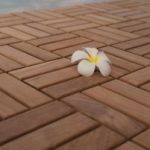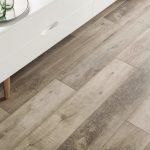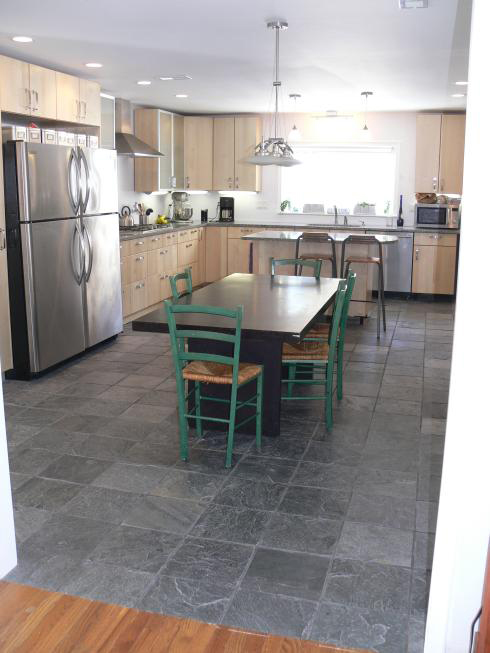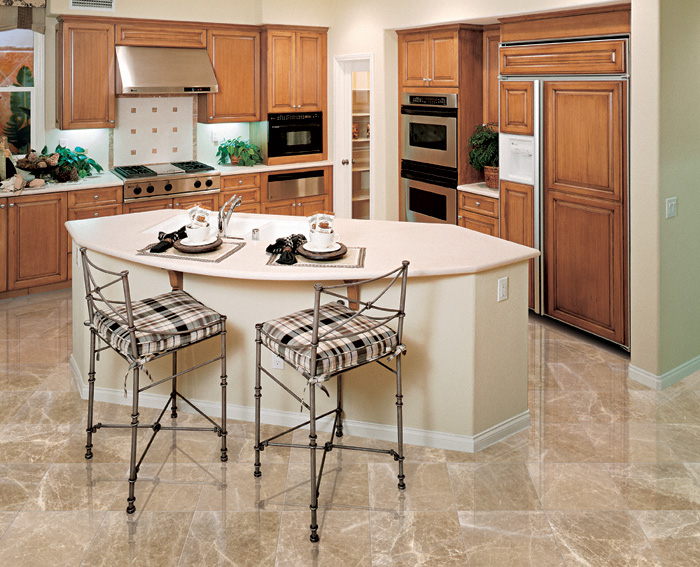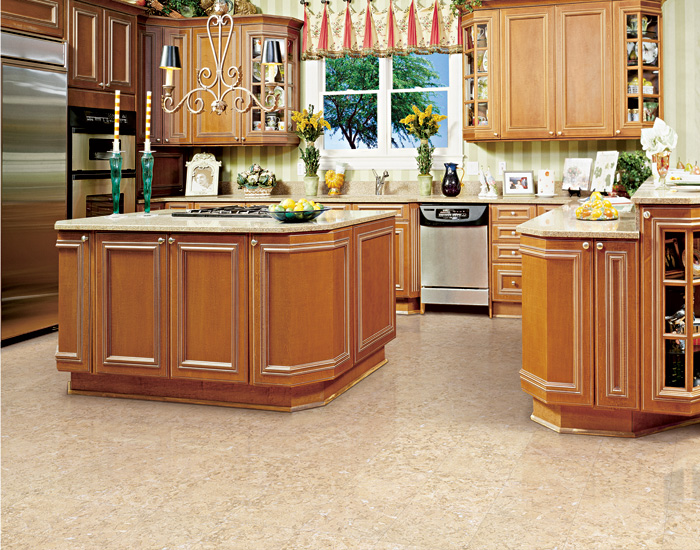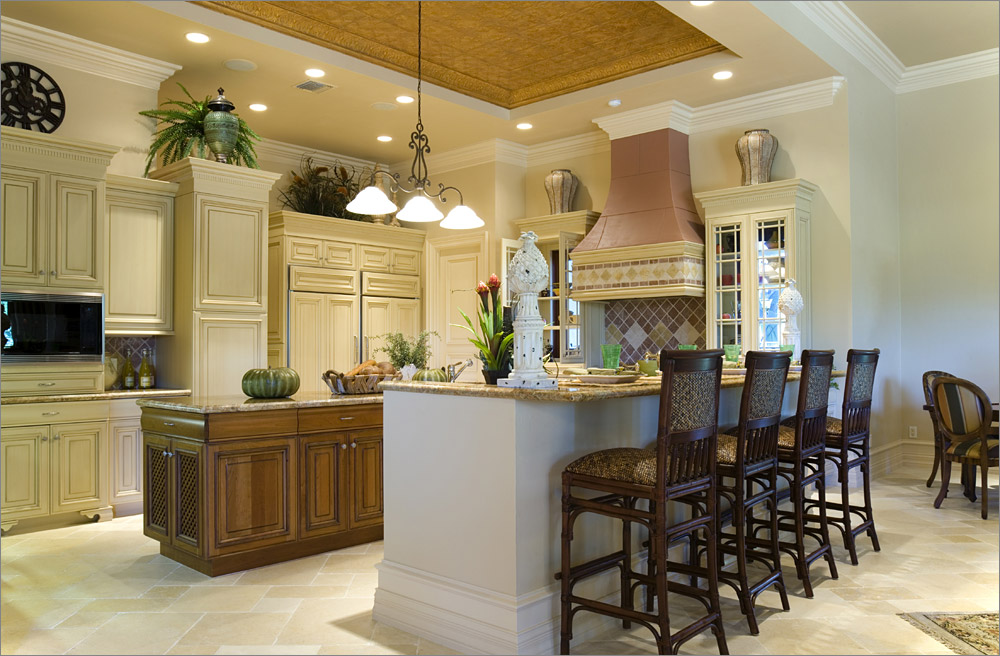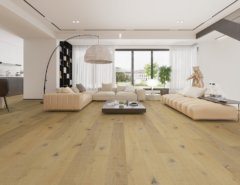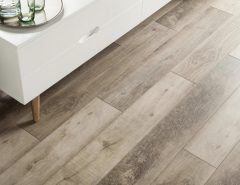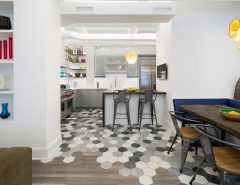
As an overall subset of building material, natural stone has at least two striking characteristics that seem to contradict each other. First, the use and popularity of natural stone surfaces has been consistent for thousands of years, and across many cultures and traditions.
And second, natural stone fits in seamlessly with modern design. This is a contradiction that you can really appreciate, proving that sometimes it’s the materials we’ve counted on all along that make the most sense in the spaces which are the most important to us.
But, it should be noted that not all natural stone can be treated in exactly the same way. Within that subset of material, there is vast variation to be considered. So, with this in mind, I’ve gathered some information around 6 types of natural stone commonly used in residential settings, most notably in places like kitchens and bathrooms. These are areas that are typified by concentrated foot traffic, moisture, and (at times) falling objects, too. So, with these common factors in mind, take a look at some of the origins, appearances, uses, advantages, and challenges of each.
Granite
Origin: Granite is an igenous rock, which means that it is the result of molten rock that has cooled in subterranean pockets until it’s solid. Colors of granite depend on the sundry minerals trapped and suspended inside the molten rock during this process. It’s these sundry materials that give granite an incredible density and stability. Granite is one of the hardest materials on earth.
Appearance: The color range of granite is incredibly varied, from absolute black to white leopard, to golden yellow, and beyond. Indeed, granite offers subtle blues, greens, and grays that are commonly popular selections for all kinds of surfaces in residential and commercial settings. Thanks to high quartz content in all granite, the speckle patterns makes granite in general a distinctive stone type.
Effects: Granite tile is known for its no-nonsense, professional air. As such, it’s been used in hallways and foyers all over the world as flooring and as wall cladding to make a good first impression in commercial towers and hotels. It also creates a look of elegance in residential settings, too.
How to use granite: Floor tile, wall cladding, backsplashes, tile-based countertops, bathroom vanities, cutting boards, coasters.
Advantages: high-end professional look, supreme hardness
Challenges: Granite is very hard, so it’s difficult to cut without experience and the right equipment. You may have to get special tools to cut it, or (better yet) get a professional if you plan on-site cutting. It’s also pretty heavy, which is another reason to get professional advice, and to make room in your budget for a professional installation.
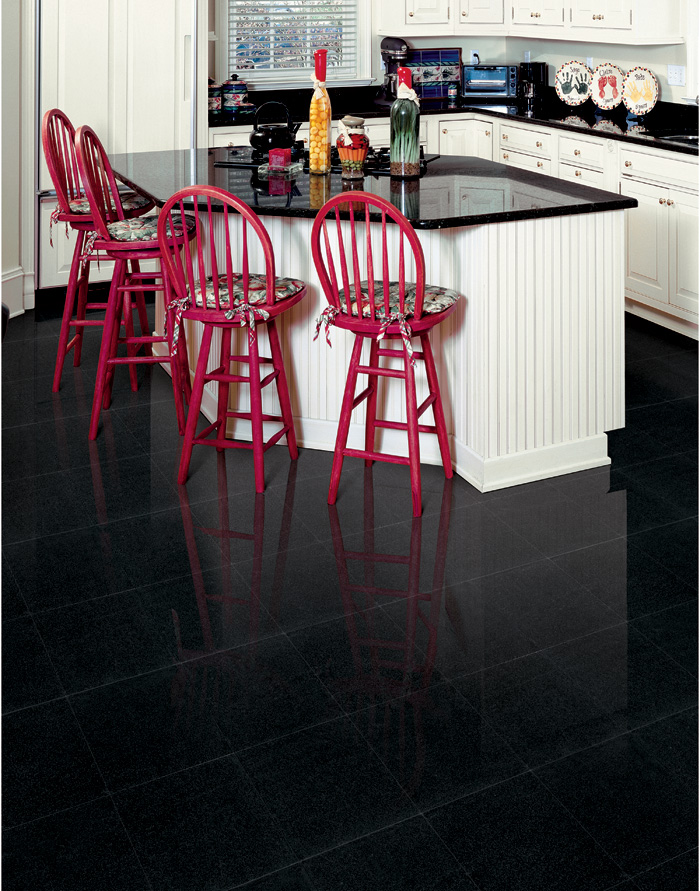
Slate
Origin: When coastal soil, clay, and other minerals are compressed and heated over millions of years, the result is what is known as slate. Slate demonstrates a rough-hewn beauty, that is also helpfully naturally slip-resistant too.
Appearance: Slate tile is of varying surface thickness, which is why it is so slip resistant and appealingly contoured. It’s generally calibrated (has a flat backing) and squared (the edges are at right angles), which makes it relatively straight-forward to install as natural stone tile goes. You have a number of finishes to choose from with slate, from a flat finish to a high sheen finish for that classic ‘wet’ look. Color variation in slate is a big theme you’ll notice, even from batch to batch. But, you can work this to your advantage when it comes time to creatively lay out each tile.
Effects: Slate tile is used extensively as an interior flooring surface all over the house, with a rustic, casual, and welcoming effect.
How to use slate: Flooring, wall cladding, patios and pool surrounds (temperate climates only).
Advantages: Natural slip-resistance, wide color range even in the same batch.
Challenges: Slate is heavy, so be careful if heavy lifting is a problem. Also, be sure to ask your vendor about exterior use of slate tile in relation to your specific climate. Slate won’t thrive in certain climates.
Marble
Origin: Although it’s unique, marble is a of a certain family of natural stone. Marble is created in streams underground. These streams gather materials like calcite and dolomite as they their flow over a long period of time. This process creates a build-up of of these materials, as well as other random materials, which eventually becomes solid. And what is created is marble.
Appearance: Marble is smooth, characterised by distinctive veins of color due to the variety of the materials that went into its formation. These vein patterns have a sort of appealing “liquid” appearance, which makes sense seeing how they were formed. Marble is known to have an artistic beauty, favoured by those with a similar artistic flair.
Effects: Once again, marble has a certain association with artistry, especially of the Renaissance. After all, not only is it a trusted building material, it’s also used as a go-to material for sculpture too. In actuality, marble has been used in the architecture of many cultures beyond the Renaissance, including Ancient Greece and Rome, to India, and to the Aztec civilization in Pre-colonial Mexico. This gives marble a sort of pan-cultural and timeless quality in your space.
How to use marble: floor tile, countertop surfaces, vanities, wall cladding, backsplashes, hearths and mantlepieces
Advantages: veining patterns in marble make every installation unique, supreme smoothness, excellent color selection.
Challenges: Marble can be vulnerable to acidic liquids common to kitchens, like fruit juice and red wine. Even if you are diligent about sealing it, it’s a good idea to be extra-vigilant about spills to avoid staining.
Travertine
Origin: Much like marble, travertine is also formed by way of underground water systems. Yet, because travertine is formed at a different stage of the process, it has characteristics that are different from the veining patterns common to marble.
Appearance: When travertine is formed, the escaping gases caused by water vapor create tiny ‘pores’ in the stone. By the time it’s solid, the pores remain. This gives travertine its distinct character, along with its creamy to chocolaty color range. Often, travertine is ‘honed and filled’ for those who love the color range travertine offers, but want to get a more refined look without its distinctive pores. Some choose to go the other way, and invest in tumbled or brushed travertine, which renders a wind-worn, ancient look.
Effects: Travertine tile is used indoors and out, depending on climate, often times to get the look of the Ancient World – the Middle-East, Rome, Ancient Greece. This is where travertine had it’s heyday as a primary building material. And the imperial presence of travertine remains undeniable even today.
How To Use Travertine: flooring, countertops, cladding, coasters, pool surrounds, patio pavers, sinks, moldings and other accessories.
Advantages: A second-to-none surface when a certain warm, inviting effect is what you want. The subtle shade spectrum travertine offers makes it pretty trend-proof.
Challenges: Much like marble, spills should be seen to right away to avoid stains.
Limestone
Origin: Limestone is yet another member of the same family as marble and travertine, derived from subterranean water sources. These river systems and springs collect materials like calcite and argonite. Traces of fossil materials can also be found in the body of a limestone slab. What’s left is a smooth, and durable natural stone that offers a wide color range, too.
Appearance: Similar to marble, without the consistent vein patterning, limestone remains to be distinctive. Limestone is also similar to travertine of course (they’re family!) but isn’t typified by a porous body, and tending to have a wider range of natural colors available for you to consider.
Effects: Limestone was used by the Ancient Egyptians to build the Great Pyramids. As such, limestone is also distinguished, and associated with the founding of civilization.
How to use limestone: flooring, wall cladding, pavers
Advantages: A natural stone that shares similar characteristics with marble and travertine, and with a wide range of colors, yet with similar classical subtlety.
Challenges: See travertine.
Sandstone
Origin: Sandstone is a variety of ‘sedementary’ rock. It’s formed when, after being collected by subterranean rivers, or ancient ocean beds. In the case of sansdstone, the key element is in the name: sand. Grains of sand are bonded while under tremendous heat and pressure to form a solid, striated and decorative natural stone.
Appearance: Sandstone tile provides you with an even surface. Depending on how it’s cut, sandstone often features striated patterns with wide color choices. The colors are typified inan earthy range of browns, gold, beige, and burnt sienna, along with natural or ‘wet’ finishes to accompany them.
Effects: Much like the other types of stone listed here, sandstone evokes the spirit of another age, while also fitting in well with modern design. It can be subdued, or vibrant, depending on your taste. In this, sandstone is extremely versatile, visually speaking.
How to use sandstone: Floor tile, wall tile, pavers
Advantages: Very durable, hypoallergenic, decorative or subdued depending on taste
Challenges: Like all natural stone, sandstone needs to be sealed. But, it’s quite susceptible to acidic materials. Watch for spills.
♦♦♦
So, there you have it; 6 examples of popular choices in natural stone surfaces. Beyond the specifics you’ve read here, there are three common points to hit on which are relevant to natural stone in general.
First, with all of the above, you should absolutely expect there to be color variations. These are natural surfaces, and the colors and patterns are the result of random occurrences as the stone is formed. Don’t look on this as a drawback, though. It’s a strength; you get a unique layout every time!
Second, all natural stone surfaces need to be sealed, without exception. This is important for a number of reasons having to do with moisture. Sealing your natural stone surface will help to guard it against staining. It will also minimize cracking and splitting, particularly when you’re installing your natural stone outside where it will be exposed to the elements. Seek advice about how often to seal your stone, and which products make the most sense for your choice of material.
Third, when installing natural stone outside, have a talk with your vendor about how suitable your choice is according to your climate. As mentioned earlier, not all natural stone will thrive in outdoor conditions where extreme weather conditions are the norm. Get a good discussion going with your vendor about the details specific to your situation, and get a good understanding about what your warranty will cover with regard to exterior installations.
In any case, enjoy your natural stone surfaces!

